Visiting China has been on my bucket list for many years. I’ve always wanted to walk along the Great Wall, visit the Forbidden City, explore the streets of Hong Kong, see the Giant Pandas, and so much more. There are so many places to see and so little time! So where do you begin???
While Beijing, Shanghai, and Hong Kong may be the usual choice for many tourists, I believe Chengdu is the perfect introduction to China.
You may have already heard of this city since it is the center of the Giant Panda Research Base; however, it is so much more.
In Chengdu, you’ll also taste incredible Sichuan cuisine, meet with friendly locals, explore beautiful temples, shop at local markets, visit UNESCO sites, and learn about the regions rich history and ancient culture. My time in Chengdu with Go Chengdu was everything I imagined it would be and so much more!
Below, I’ve included what I believe to be the top 11 things to do and see in Chengdu, China. I hope you find the information useful as you plan your next adventure to China!
Chengdu Research Base of Giant Pandas
As I previously mentioned, the Chengdu Research Base of Giant Pandas is what draws in many of the 151 million tourists each year.
The base is a non-profit research and breeding facility for giant pandas, red pandas, peacocks, and many other species of animals and over two-thousand species of plants. Founded in 1987, they originally started with six giant pandas that were rescued from the wild. By 2018, they had over 170 panda births and currently have about 100 captive pandas. The goal is to “be a world-class research facility, conservation education center, and international educational tourism destination”.
Inside the base you can see these the pandas at different ages sleeping, eating, drinking, nursing, climbing trees, and playing with each other. In all honesty, most of them will probably be eating, but whatever they do, they look adorable doing it.
Tip: Be sure to arrive a few minutes before opening to grab your tickets and get in line. Because this is a popular tourist destination, except it to be insanely busy! If you want to skip the crowds, I recommend visiting Chengdu during the winter.



Kuan Zhai Alley
If you love shopping at markets, you’ll really enjoy Kuan Zhai Alley, also known as Wide and Narrow Alley.
These alleys are lined by renovated, ancient buildings and courtyards that were originally built during the Qing dynasty (about 1700 AD). Now, they have mostly been converted to shops, tea houses, hostels, bars, restaurants, and stalls for the selling of goods.
Whatever you’re interested in purchasing or experiencing, you’ll probably find it here in Kuan Zhai Alley. The Alley offers everything from local dishes to Sichuan opera performances to relaxing ear cleaning services. Yes, that is a real service!!
For a quick immersion of local Chengdu culture, be sure to check out Kuan Zhai Alley.





Coat by Morning Lavender

Jinsha Site Museum
The Jinsha site is an archaeological site in Chengdu that was discovered accidentally in 2001 during real estate construction. The museum is comprised of several exhibition halls featuring the actual dig site, uncovered artifacts, and recreations of what they believed life was like for the people who lived in the “Land of Abundance” dating back to the 4th century BC.
One interesting fact I learned during my visit was that the Jinsha people used to offer elephant tusks as sacrifices to their gods. We know this because tusks were discovered during the dig, some which must remain buried in the ground so the integrity of the site remains. Other interesting items found at the site were jade artifacts, bronze figures, gold jewelry, and carved stone objects.
There is so much to learn at the Jinsha Site Museum! If you like ancient history this is a must-see during your trip to Chengdu.
Tip: Because the museum is large and requires a lot of walking between exhibitions, make sure to wear comfortable shoes. If you wander the site at your leisure, the entire tour will take about 2 hours.



Dujiangyan Irrigation System
You may be thinking, “Why would I want to check out some irrigation system?”. But I promise this UNESCO World Heritage Site is a must-see for many reasons! For one, is to see the oldest, no-dam irrigation system in the world.
Around 2,200 years ago (built in 256 BC), the people who lived along the Minjiang River were constantly threatened by floods. Wanting to make the region safer and more viable for his people, the Qin governor, engineer, and hydrologist, Li Bing and his son, created a unique irrigation system that helps prevent future flooding. Since then, the Chengdu Plain has been free of flooding and allowed to prosper.
Another reason for visiting Dujiangyan is to admire the scenery. As you cross over the Minjiang River using the Anlan Cable Bridge, you will find yourself surrounded by lush mountains and turquoise water. The area is absolutely picturesque, so be sure to have your camera ready.



Erwang Temple at Dujiangyan
Since Erwang Temple is part of Dujiangyan, you can either enter the temple at the top of Yulei mountain or enter the temple from below after a tour the irrigation system. We started the tour from the top in the early morning which I think was the best choice. Most people tour the irrigation system first, so we were able to explore the temple without other tourists.
Originally, the Erwang Temple or Two Kings Temple was a Wangdi Temple built in honor of an ancient Shu King. However, his temple was relocated so locals renamed and dedicated it to honor the memory of Li Bing and his son who saved the Chengdu Plain from yearly floods by building the Dujiangyan Irrigation System. It’s called Two King’s Temple because the father and son were promoted to the status of kings after they died.
Fun Fact: Some say that Li Bing’s son, Erlang Shen, never truly existed. Apparently, there are no records of his existence and some believe he was invented by locals to give their hero a descendant to carry out his legacy.
The temple is beautifully decorated and designed, a great example of Chinese architecture. See for yourself in the photos below!
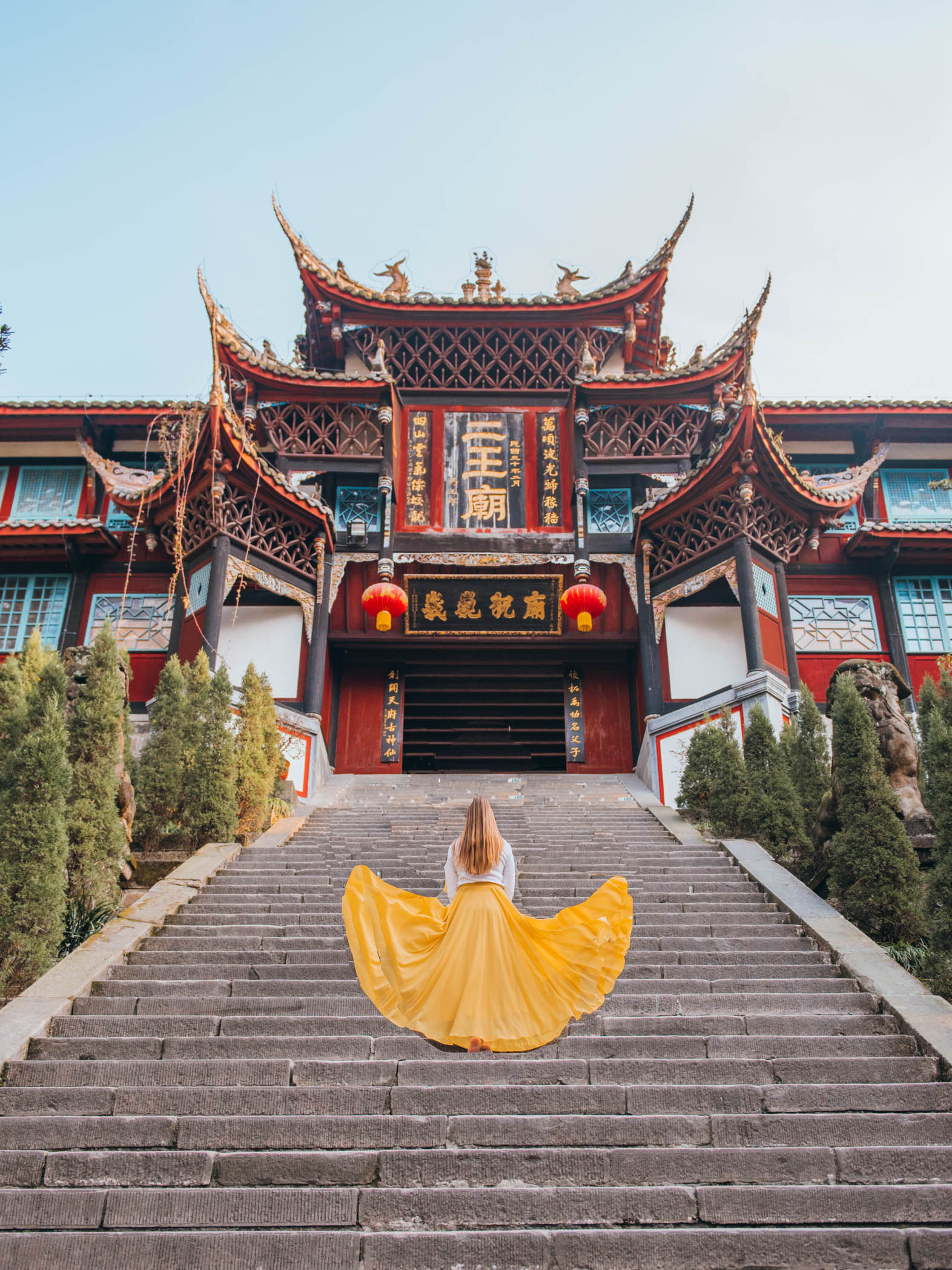
Skirt by Morning Lavender
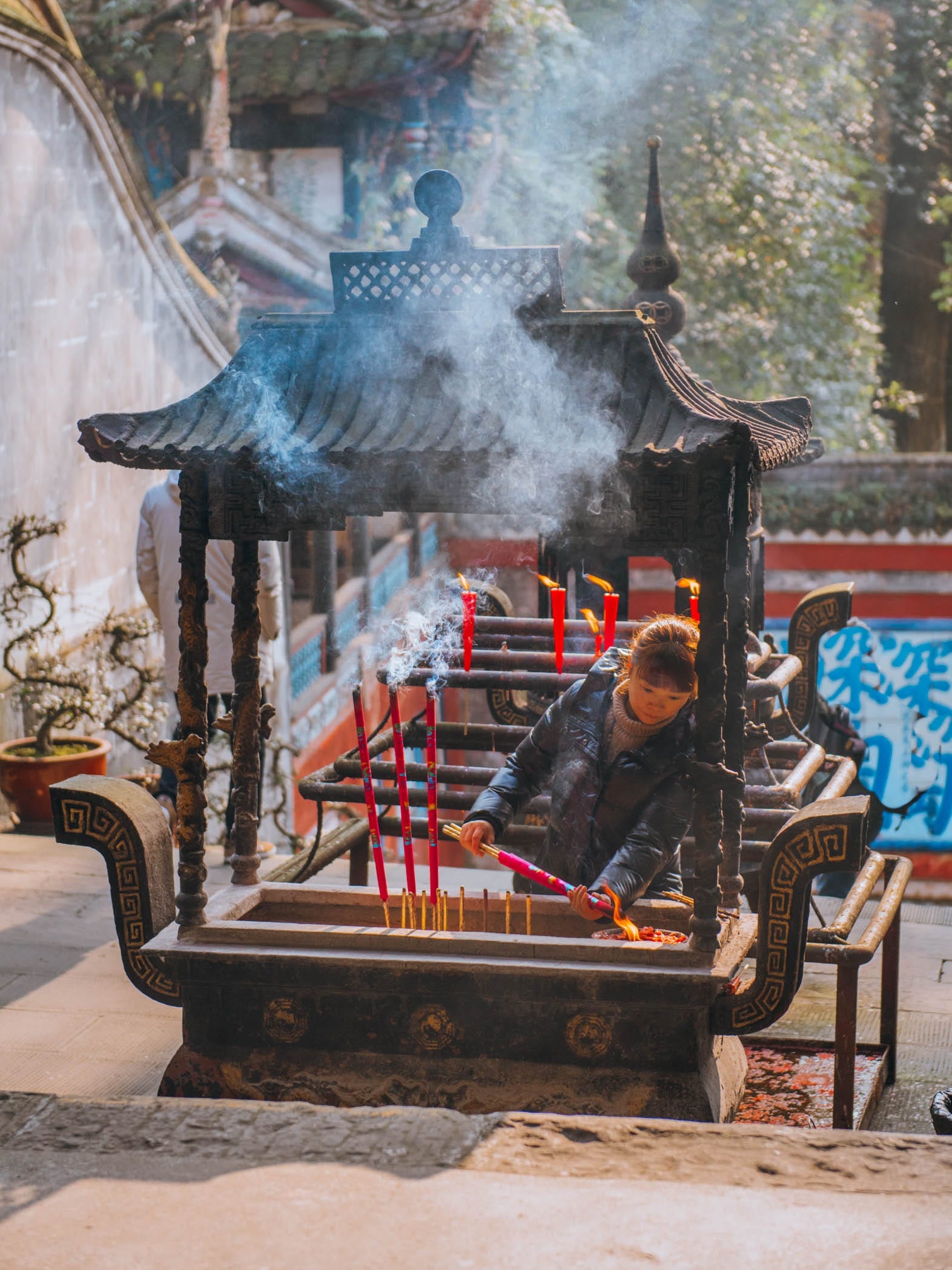
The Qingcheng Mountains
Mount Qingcheng is full of ancient history, beauty, and wisdom. About 68 kilometers from Chengdu, it is considered to be the birthplace of Taoism.
What is Taoism? Keep reading to find out! Or skip this paragraph to get back to the Qingcheng Mountains.
Around 143 AD, Master Zhao Daoling chose Mount Qingcheng to preach Toa. Taoism or Daoism is a religion of unity of opposites – Yin and Yang. The belief is that the world is filled with complementary forces where there is no right or wrong, only choices. The Tao or the Way guides us, however is it not a god. It is that which the universe originates and connected to all things. The goal of Taoism is to achieve harmony and unity with nature. Before Communistic rule in China during the 1950s, Taoism was the main religion.
The Mount Qingcheng has two sides: the front side and the back side. The front side (the busiest side) features ten Taoist temples, waterfalls, and shopping stalls. While you may want to hike to the top of the mountain, many choose to save time and energy around the half way marker by taking a cable car and boat to the top. The back side is perfect for those who are less interested in temples and more interested in hiking through nature.
Near the top, you will find yourself in a dark, temple courtyard (Chaoyang Temple) surrounded by red ribbons. These ribbons are wishes made by those who visit this site. While I don’t believe in the power of wishing, it was beautiful to see thousands of wishes take a physical form.
If you want to make a wish, you can purchase a red ribbon in this courtyard for only 20 Yuan.
Tip: If you are hoping for a spiritual or religion experience, do not go during the weekends or holidays. Mount Qingcheng is a popular destination it may lose the charm if you are shoulder to shoulder with people.



Chuancais Museum (Sichuan Cuisine Museum)
This one is for all you foodies!
Chengdu is not only world famous for their giant pandas, but also for being the City of Gastronomy designated by UNESCO. Therefore, it is only right to have a museum dedicated to learning about Sichuan Cuisine.
What makes Chuancais Museum so unique is that it is an ‘eatable museum’. No that doesn’t mean you can literally eat the museum. Travelers are given the opportunity to not only learn about Sichuan cuisine by observation, but to also experience.
Under the guidance of a professional chef, you will learn the technique, process, skills, and essence behind making traditional Sichuan dishes. What better way to learn about Sichuan Cuisine than by actually cooking and eating some??

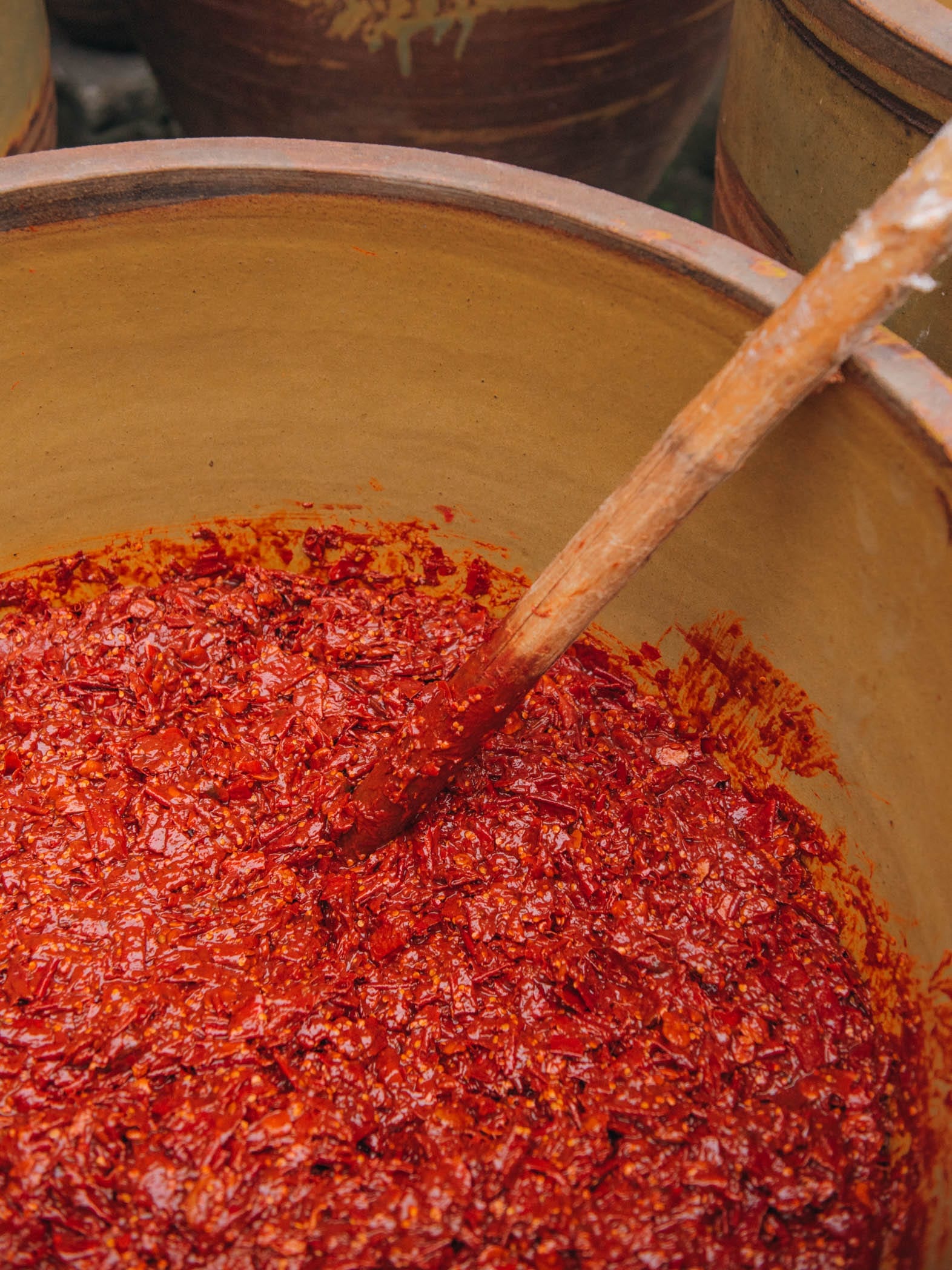

Wuhou Temple
Wuhou Temple, also know as the Wuhous Shrine Temple of Marquise, is an important shrine that highlights Sichuan’s ancient Shu past and the great men that made the Shu Kingdom legendary. The temple is dedicated to Zhuge Liang, the Marquis Wu of the Kingdom of Shu during the Three Kingdoms Period (220 – 280 AD). Zhuge Liang was a diplomat, militarist, astronomer, and politician who helped the first Shu Kingdom’s emperor, Liu Bei, rule.
The temple is 37,000 square meters of beautiful paths and bamboo woods. The appealing landscape, interesting history, traditional architecture, and the infamous red-wall have made the Wuhou Temple one of the most popular tourist destinations in Chengdu.
Once you’ve made your way through the complex, be sure to exit onto Brocade Street. Similar to Kuanzhai alley, you’ll find arts, crafts, food, and more. If you haven’t shopped yet, this is the perfect place to do so.


Shu Feng Ya Yun Sichuan Opera
Seeing a Sichuan Opera is a must in Chengdu.
Each Sichuan Opera performance is inspired from Chinese classic novels and folklore. Our particular show was from the book: A Dream of Red Mansions.
The show is about and hour and a half and features a few short acts of different genres. The opera we saw had hand shadowing, a solo performance with the erhu, a stick puppet show, acrobatics, spitting fire, face mask changing, and a comedy show about how a gambling man’s wife punishes him for losing.
While you watch the performance, you can enjoy complimentary sunflower seeds and tea, purchase additional food, or receive ear cleaning services.


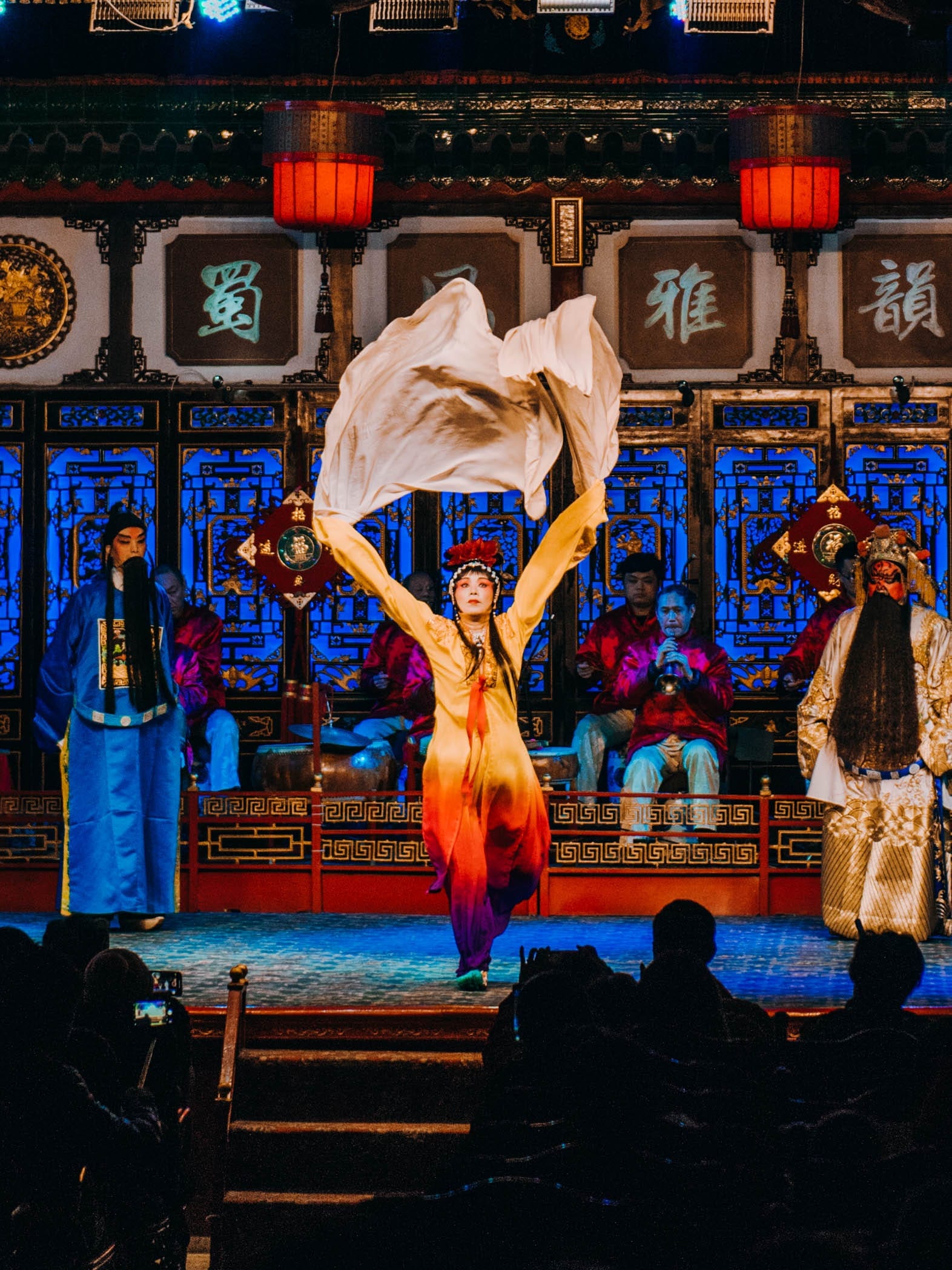

People's Park
The People's Park was one of my favorite places in all of Chengdu. This tranquil piece of nature is located near the center of the city, making it the perfect escape for locals and tourists alike.
As you walk through the park, you'll come across people participating in various activities such as hacky-sack, frisbee, singing, stretching, dancing, and playing cards. You may also find people enjoying tea at the Tenmen Tea House or taking a boat onto the lake.
Even though this park acts as a haven from the hustle and bustle of Chengdu, it has a wonderful way of bringing people together.


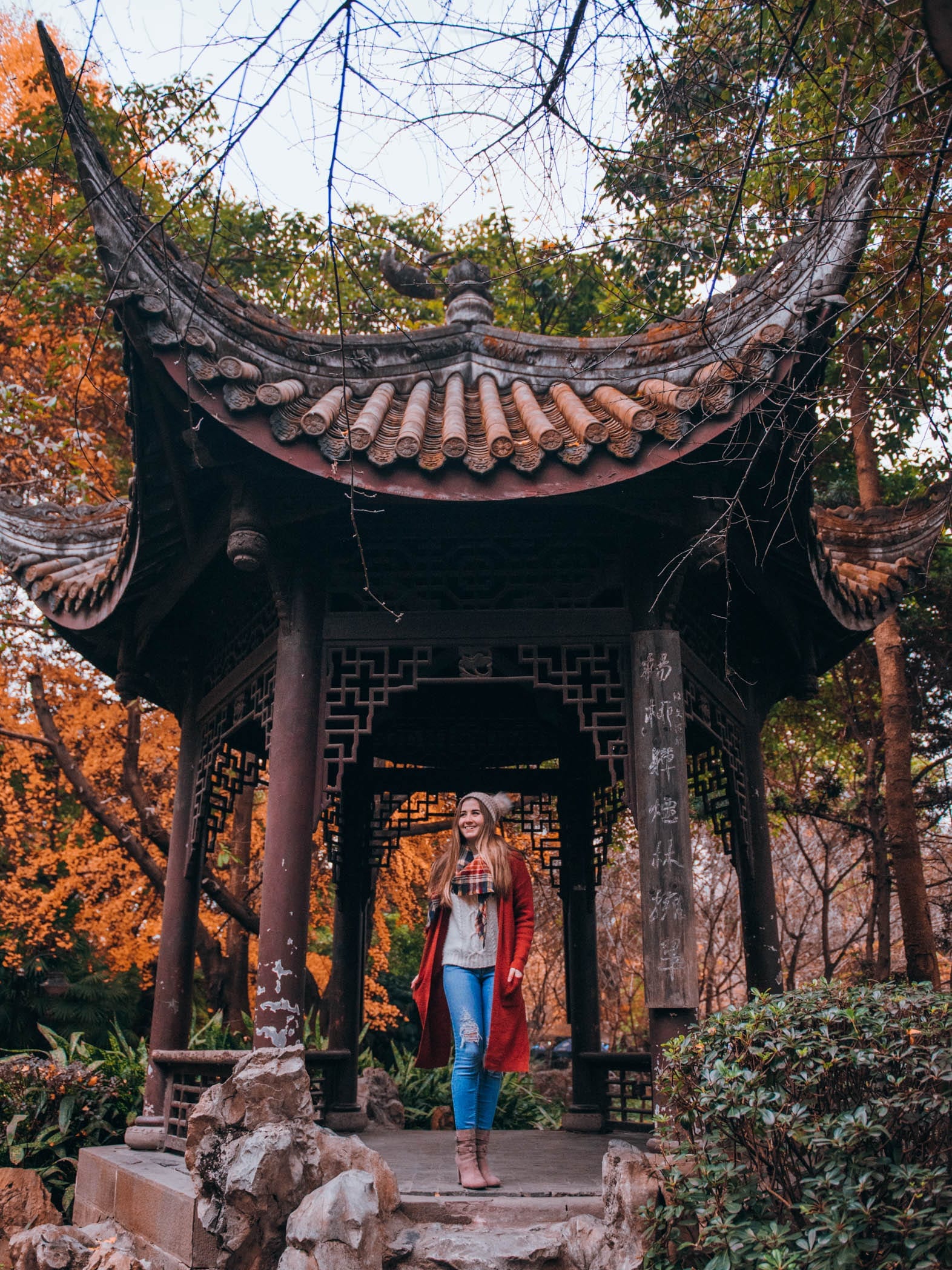
Try Hot Pot: The Most Famous Sichuan Dish
For those of you who have never heard of Hot pot, it is a dish that includes broth (filled with spicy oil and peppers), dipping ingredients (meats, vegetables, noodles, dumplings, and rice cakes), and sauces. You dip whatever you’d like into the broth and wait for it to cook. Once it is done, just dip it in sauce and enjoy. If you’re like me and cannot handle anything spicy, they offer a non-spicy broth as well.
Hot pot is usually shared with more than one person so it is more of a communal dining experience instead of a dish.
If you’re interested in trying the best Hot pot in Chengdu, be sure to go to Shu DaXia Hot Pot. This place was not only aesthetically beautiful but the food was amazing too! Plus, they offered interested meats such as pigs throat and brain. Definitely, the place to dine if you are adventurous with food.



Shopping at New Century Global Center
Whether you love to shop or not, the New Century Global Center is definitely worth a visit. It opened in 2013 and is the worlds largest building in terms of floor area!
On top of having a variety of different shops, the building is also comprised of offices, conference rooms, a university complex, two commercial centers, hotels, an IMAX cinema, a "Mediterranean village", an Olympic-size skating rink, and an indoor waterpark called "Paradise Island Water Park" that contains an artificial beach. In all honesty, you could spend the entire day here and never get bored.
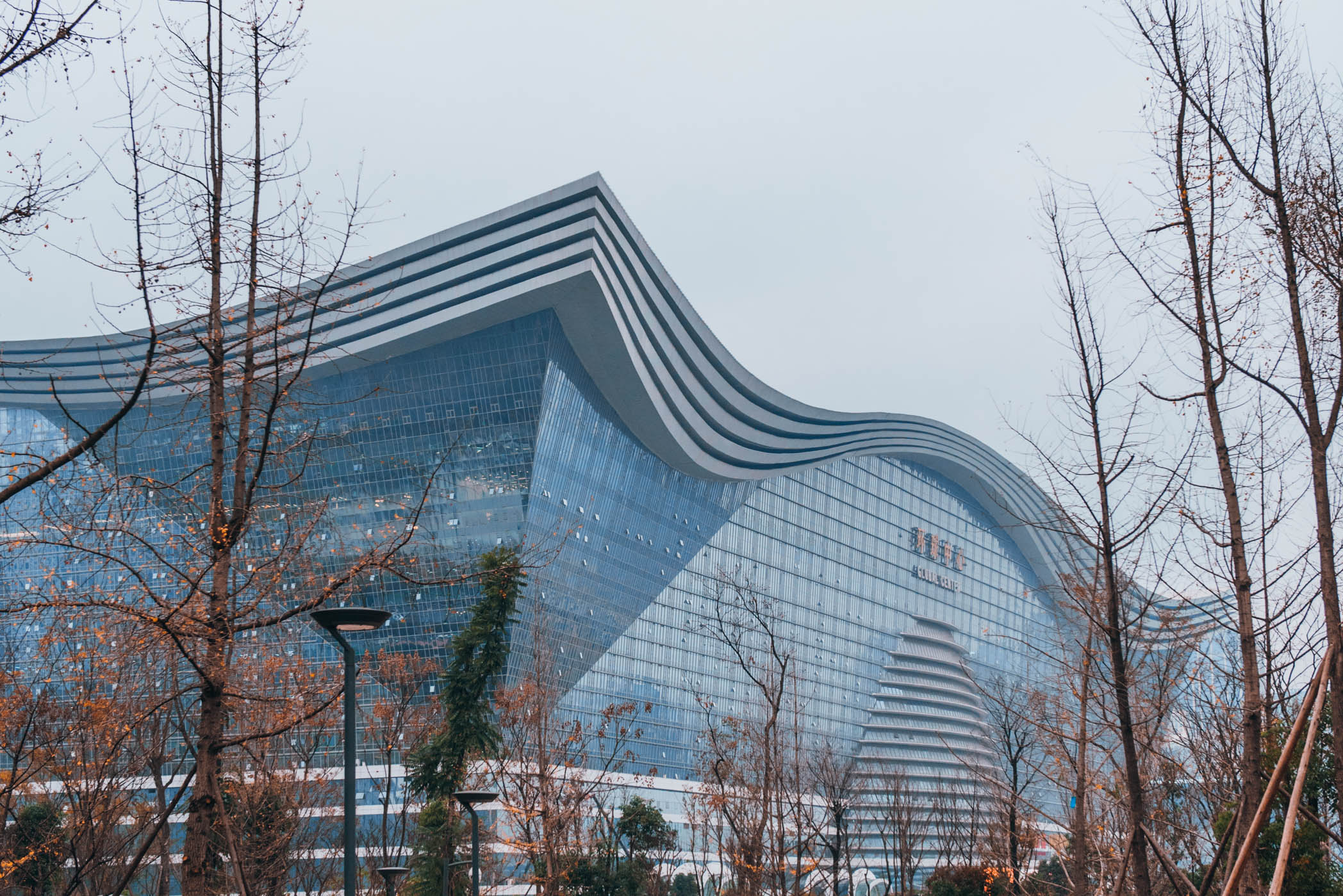
Chengdu Nightlife
Over the last couple of years, Chengdu nightlife scene has grown rapidly. While the theater, tea houses, and open-air markets are still a large part of the culture in Chengdu, much of this has been replaced by Western-inspired bars, nightclubs, restaurants, and karaoke.
If you're looking for some cool places to check out, here's a few:
- The Beer Nest - This bar has a huge variety of beer and is popular with both Europeans and Chinese. They also feature wines, whiskeys, cocktails, and more. Because it was such a success, they've opened another!
- Little Rock - Did you know rock and roll was once popular in China?? Little Rock was one of the key spots for Chinese rock! While they don't have live performances anymore, you should still go to the original bar and check out the memorabilia. If you want to see some live indie rock, check out New Little Bar which is right around the corner!
- Jellyfish - The most famous club in Chengdu. If you're looking for a place with loud music, a packed dance floor, and lots of booze, this is the place for you.
- The Muse - This establishment is part of a huge chain with clubs all over China. With 23 bars and a huge dance floor, you know everyone is there to party till the sun rises. You can also rent out a private room for the night starting at 1000RMB (about $145 USD).
- New Machu Picchu Bar - A favorite amongst expats, The New Machu Picchu is a bar and live concert venue. It's a great place to grab a beer and play some foosball.


Leshan Giant Buddah
Even though it is a 2-hour drive from Chengdu, this UNESCO World Heritage site should be at the top of your list of things to see!
The Leshan Giant Buddha is a 71-meters (233 ft) tall stone statue, making it the largest Buddha in the world and the tallest, pre-modern statue in the world! The statue is carved out of a cliff face of Cretaceous red sandstone that lies at the convergence of the Min and Dadu River.
What make's this site unique is that you can get a few different perspectives of the Buddha. There are stairs for visitors to climb up near the head of the Buddha or down towards its feet. Each viewpoint is unique and worth seeing!

Emei Mountain
Another hour from the Leshan Giant Buddha (a total 3 hours from Chengdu) is Emei Mountain or Emeishan. I know this is a bit of a drive, but if you're already near Leshan, it's worth the visit.
Emei Mountain is known as one of the Four Sacred Buddhist Mountains in China because it is the location of the first Buddhist temple in China, built in the 1st century CE. If you make it to the "Golden" summit, there are two temples and a gold statue of Samantabhadra. He is a bodhisattva, and Emeishan is a place of his enlightenment. According to a legend, he flew away from the top of the mountain on his white three-headed elephant. And since then, the mountain is considered the place of his eternal stay.
When you start, you have three options:
- Hike to the summit. Most reviews I've read says this takes two days to climb.
- Take a bus halfway to a cable car which goes a couple kilometers up and hike from there. This should take about a day and a half.
- Take a bus the whole way up. This is what most tourists do since it is the quickest way up and down the mountain.
If you stay overnight on the mountain, you can book a room at a monastery or temple along the way up.
If you're really interested in hiking, check out Trip Advisor (HERE) for reviews. Many people have written about their experience and offer great suggestions on how to do it better.

Thank you so much to Go Chengdu (Chengdu Bureau of Tourism) for inviting me to explore your beautiful city. If you're looking for a guide, please reach out to Sophie Hu at 1075791644@qq.com or tel: +8618224049201. Sophie is an amazing guide and can create a private tour based on your needs.
As always, my thoughts and opinions are my own.
Angie xoxo


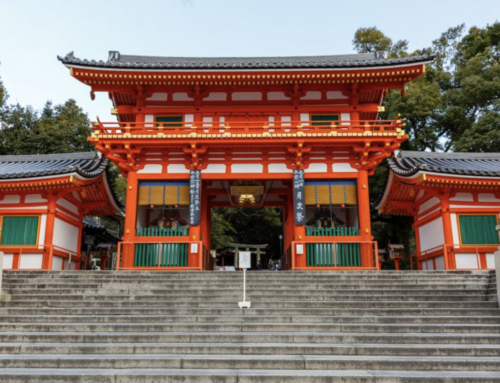
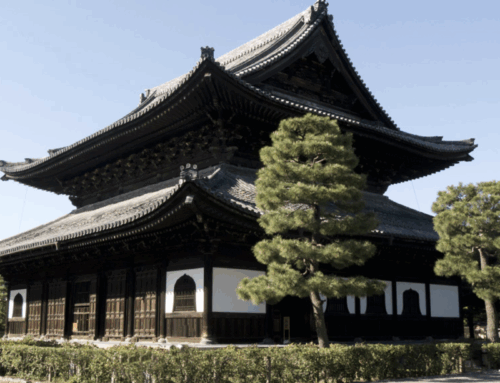


Great pictures!!! I know this is kinda old, but what time of the year (month) did you travel here?
I visited in early December.
Wow, this all looks amazing! The giant Buddha statue is gorgeous and I’m dying to try some authentic hot pot. Consider Chengdu officially added to my bucket list!
If you love spicy, you’ll be in for a real treat! So so happy to hear Chengdu is now added to your bucket list! 🙂